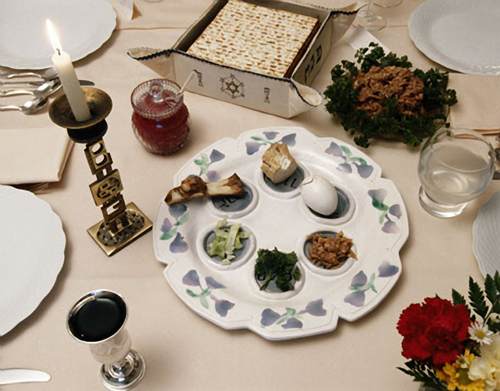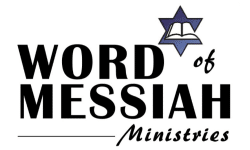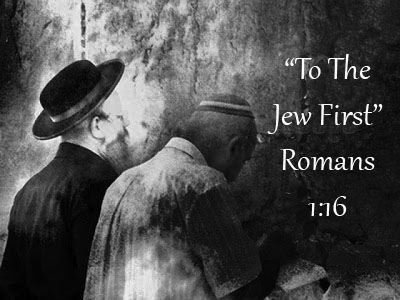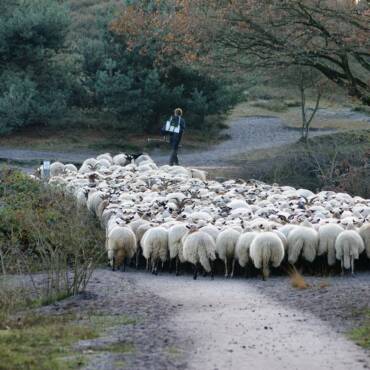Preparing for Passover

By Sam Nadler
I remember from childhood in New York City when my family would celebrate the annual Feast of Passover. Every year we would all crowd into the small apartment where my grandfather would lead our Passover Seder meal (Seder means “order”). The fragrance of beef and chicken wafted through the air, the family squeezed in around the table, and grandpa donned a kittel (the white ceremonial robe worn by the leader of the evening.) This was always a joyous occasion for my family!
Traditionally, Jewish people understand Passover as a time to reflect upon and appreciate our personal and political freedom. As we read from a Haggadah, a booklet that leads families through the Exodus account, we remember how God delivered our people from Egypt.
Though I grew up celebrating Passover every year, I would have never imagined that this foundational Feast might find its fulfillment in the spiritual freedom found in Israel’s Messiah, Yeshua. Yet in fact, the New Covenant is built upon the foundation of Passover; hence Yeshua is declared to be the Passover “Lamb of God” (John 1:29).
Preparing the Home
When Messiah Yeshua celebrated Passover just before His death, He sent two of His followers to prepare the room for their Seder (Luke 22). Passover preparations, both then and now, center around the scrupulous removal of all chametz (foods made with yeast) from the home. During the eight days of Passover, only foods made without yeast may be eaten (Exodus 12:15). The most well-known unleavened food is matzah, a special bread made at Passover. There are two reasons why matzah is the only bread to be eaten during Passover:
1 – The historical reason:
Thirty-four hundred years ago, when the Jewish people were about to be delivered by God’s mighty arm from bondage in Egypt, God told them to be ready to move on a moment’s notice. This is historically why we eat only matzah at Passover. Matzah is sometimes called the “bread of haste,” because God says to Israel, “you came out of the land of Egypt in haste” (Deuteronomy 16:3).
2 – The Scriptural reason:
Unleavened bread is made without yeast. Even as leaven or yeast puffs up the bread to make it seem greater than it is, so also the Scripture consistently uses leaven as a picture of pride, sin, and unbelief. This is why yeast was not permitted as part of the normal meal offerings in the Tabernacle (Leviticus 2:11). Thus, Messiah warns His followers regarding false teachers, “Watch out and beware of the leaven of the Pharisees and the Sadducees” (Matthew 16:6).
Preparing the Heart
Today in homes where Passover is observed, celebration does not begin until all leavened products are removed. Simply cleansing the home, however, is not sufficient preparation. Believers in Yeshua understand that this removal of leaven from the home must reflect the state of the heart.
Paul details how this connection works:
“Your boasting is not good. Do you not know that a little leaven leavens the whole lump of dough? Clean out the old leaven so that you may be a new lump, just as you are in fact unleavened. For Messiah our Passover (Lamb) also has been sacrificed. Therefore let us celebrate the feast, not with old leaven, nor with the leaven of malice and wickedness, but with the unleavened bread of sincerity and truth.” – 1 Corinthians 5:6-8
When Yeshua sent His disciples to prepare the Passover, He knew, as Paul learned, that without proper preparation there could not be full participation in Passover’s spiritual blessings. Why do more believers in Messiah not enjoy the new life He brings? Believers today, like the first century Corinthians, need to “clean out the old leaven,” the unconfessed sin that hinders intimacy with the Lord.
Where there is unconfessed sin, there are obstacles in relating to God (Isaiah 59:2). We are saved because of His once-and-for-all atonement for sins (Hebrews 10:12). In our messy lives we often do not know the joy of that salvation, a joy which only comes from a close walk with God (1 John 1:7); so, we confess our sins to the Lord and thank Him for the full fellowship we have in Messiah (1 John 1:9).
Preparing for the Herald of the Lord
There is one other preparation traditionally recognized at Passover: the preparation for the coming “Herald of the Lord.” An empty seat, along with cup and plate, is left at the table for Elijah the prophet. Elijah is expected to arrive at Passover preceding and proclaiming the Coming One, that is, the Messiah Himself. Where did such an idea originate? This tradition is taken from the third and fourth chapters of Malachi:
“Behold, I send My messenger, and he will prepare the way before Me. And the Lord whom you seek will suddenly come to His temple, even the Messenger of the covenant, in whom you delight. Behold, He is coming,’ says the Lord of Hosts.” – Malachi 3:1; 4:5
This prophecy was fulfilled when in the New Covenant, John the Immerser (or Baptizer) came in the “spirit and power of Elijah” (Luke 1:17).
At the end of the Passover meal in traditional homes, Elijah’s empty seat is recognized. By this they see that he has not come this year, and therefore Messiah (Who came in the spirit of David even as His forerunner came in the spirit of Elijah) will not come this year either. Therefore in these homes that know only tradition and ritual, the Seder ends not with praise but rather with a lament: “Next year in Jerusalem” (L’Shana Haba b’ Yerushalayim).
This saying refers to the fact that those without redemption in Messiah wait yet another year uncertain whether hope will arrive. But for the redeemed who know the Lord, we end with rejoicing and praise. Messiah has come, fulfilled the requirements of the Law, fulfilled the need of the Passover Lamb, and obtained eternal life for all who will believe in Him. Having eternal life now, we look forward with confidence for Messiah’s return to bring us to the New Jerusalem. Therefore, let us go forth as God’s heralds declaring the ultimate Passover message: “Behold! The Lamb of God who takes away the sin of the world!” (John 1:29)




Add Comment